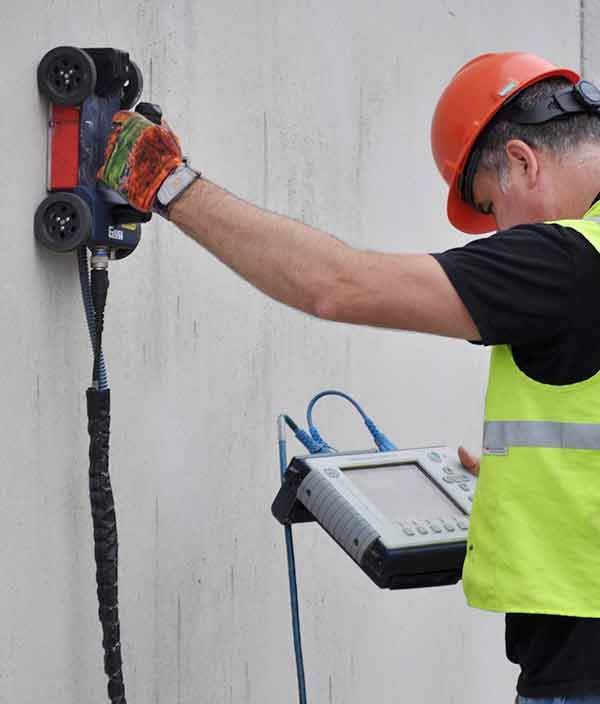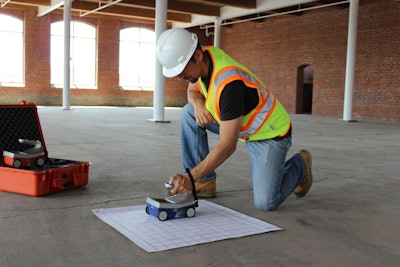Comprehensive Overview to Concrete Scanning Technologies
Comprehensive Overview to Concrete Scanning Technologies
Blog Article
Unveil the Transformative Power of Concrete Scanning in Maximizing Effectiveness and Safety
Concrete scanning has actually arised as a vital device in the building industry, providing unequaled advantages in boosting task effectiveness and making sure security standards. The transformative power of concrete scanning exists in its capability to give real-time data and comprehensive understandings, revolutionizing exactly how jobs are prepared and implemented.
Importance of Concrete Scanning
Guaranteeing the architectural stability and security of construction tasks begins with the crucial action of performing detailed concrete scanning. Concrete scanning is a non-destructive technique made use of to discover and map subsurface components within concrete structures.
Furthermore, concrete scanning assists in maximizing job timelines and budget by avoiding unexpected costs and hold-ups that might occur due to unanticipated obstructions within the concrete. Eventually, investing in extensive concrete scanning is a positive method that enhances both efficiency and security in building jobs.
How Concrete Scanning Works
Concrete scanning operates as a crucial device in building and construction tasks by utilizing sophisticated technologies to find and map subsurface components without creating architectural damage. Ground Penetrating Radar (GPR) and Electromagnetic Induction (EMI) are two main methods used in concrete scanning. GPR jobs by producing high-frequency radar pulses right into the surface, which recover when they come across subsurface items or spaces. The moment considered the signal to return suggests the depth and place of the items. EMI, on the other hand, uses magnetic fields to identify differences in material make-ups, such as recognizing rebar or conduits within concrete structures.
Throughout the scanning procedure, the information gathered is analyzed in real-time, permitting prompt recognition of potential hazards or barriers below the surface. By using these innovative technologies, concrete scanning substantially lowers the risk of costly damages and injuries on building sites.
Benefits of Concrete Scanning
Using sophisticated scanning modern technologies in building projects provides a wide variety of benefits, improving both effectiveness and security on-site. One of the main benefits of concrete scanning is the capability to discover and find embedded items such as rebar, post-tension wires, and avenues precisely. By determining these elements before boring or reducing into concrete structures, the threat of unintended strikes is substantially minimized, avoiding potential injuries to workers and damage to the framework itself. Concrete scanning assists in planning and developing more efficiently, as it provides exact information concerning the place and deepness of structural parts.

Case Studies: Concrete Scanning Success

In an additional case, a construction business made use of 3D concrete scanning to evaluate the problem old concrete frameworks in a historic building. The detailed scans offered useful understandings into the level of degeneration and assisted focus on upkeep initiatives effectively. By proactively addressing areas of problem identified through scanning, the company was able to prolong the life-span of the framework and ensure resident security.
These study underscore the transformative power of concrete scanning in enhancing effectiveness, accuracy, and security in building projects.
Applying Concrete Scanning in Projects
Carrying out advanced scanning modern technologies throughout building projects has actually become significantly essential for improving precision and security. By incorporating concrete scanning right into job planning and execution, building teams can recognize prospective threats, such as rebar or post-tension cable televisions, concealed within concrete structures. This positive approach lessens the risk of mishaps, hold-ups, and pricey rework, ultimately causing much more reliable job timelines and budget plans.
To carry important source out concrete scanning successfully, task supervisors must work together closely with skilled scanning specialists to identify the most ideal scanning methods for the specific job needs. Engaging scanning specialists from the beginning of a task makes it possible for the team to produce thorough scanning strategies that deal with vital locations of you can try this out problem and ensure thorough information collection.
Moreover, integrating concrete scanning into regular project operations can improve decision-making processes, as real-time scan information provides immediate understandings right into the problem of concrete structures - Concrete Scanning. This data-driven technique promotes notified analytic and makes it possible for groups to make changes immediately, promoting a culture of efficiency and safety and security throughout the task lifecycle

Conclusion
In verdict, concrete scanning plays an essential function in improving efficiency and safety in construction jobs. By using innovative modern technology to map and spot out underlying structures within concrete, this procedure aids to avoid costly blunders, make certain architectural honesty, and lessen threats on site. With the capacity to reveal surprise components and supply accurate data, concrete scanning verifies to be a beneficial tool for enhancing job end results and optimizing total success.
Concrete scanning is a non-destructive approach used to discover and map subsurface components within concrete structures. Furthermore, concrete scanning helps in optimizing project timelines and budget by staying clear of unexpected costs and hold-ups that may arise due to unexpected obstructions within the concrete. One remarkable instance research entails a large improvement task where concrete scanning played an important role in ensuring task success.In one more case, a building business made use of 3D concrete reference scanning to analyze the problem of maturing concrete structures in a historical building. By incorporating concrete scanning right into project planning and execution, building and construction teams can recognize potential risks, such as rebar or post-tension cords, hidden within concrete structures.
Report this page